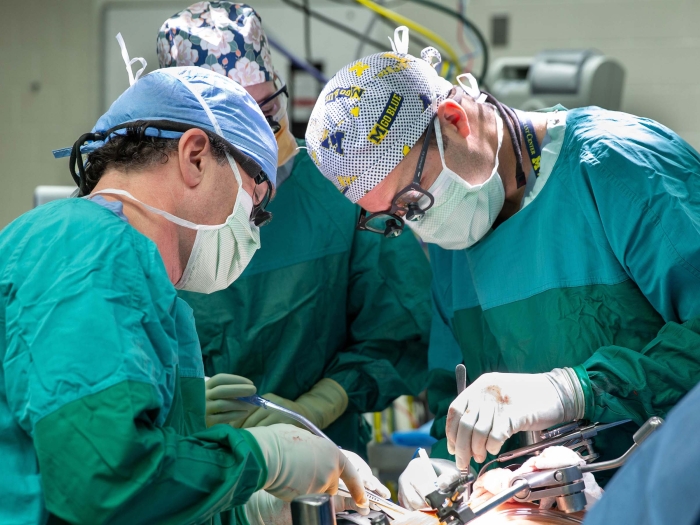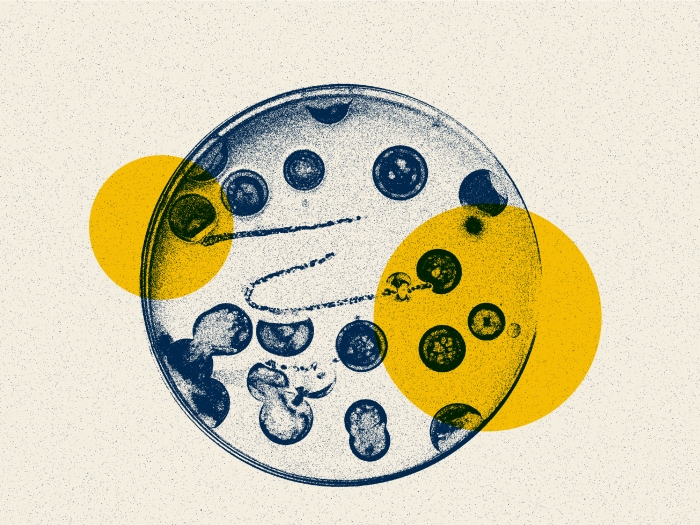Liver perfusion is an innovative way to house donor organs
1:40 PM
Author |

In the world of liver transplantation, normothermic blood-based machine perfusion is a giant leap forward in innovation and efficiency.
The process, also known as liver perfusion, works differently than traditional ischemic cold storage methods for donor livers by involving technology that recreates the optimal physiological conditions for the organ.
This means the technique maintains the right temperature for the donor livers to survive and provides the organs with adequate nutrition and oxygenation levels.
Christopher Sonnenday, M.D., who serves as the director of the University of Michigan Transplant Center, says this technology may be the “biggest thing in organ transplant innovation in our lifetimes.”
“Liver perfusion allows us to consider organs that we typically wouldn’t even think about,” he said.
“It also increases our abilities to transplant more patients while maintaining their success rates long after they received donor livers, and providing us with a more immediate, smooth and effective process. This technique clearly offers multiple advantages to our patients.”
Sonnenday added that liver perfusion ultimately “holds the power to break the inseparable bond between organ donors and recipients,” as it provides a way to house donor organs far longer than traditional storage mechanisms.
“There are many published clinical trials that show the high efficacy rates of using liver perfusion for transplant patients,” he said.
“And Michigan Medicine has participated in many of these trials – and continues to do so – while extending our work in this realm.”
Sonnenday noted that “just like any other new technology or innovation,” liver perfusion is a “resource intense thing” that involves many moving parts.
“To combat this, our in-house team, which includes surgeons, as well as a really talented team of organ preservation staff, seamlessly work together to ensure that our donor organs are sufficiently cared for on our perfusion devices,” he said.
Liver perfusion allows us to consider organs that we typically wouldn’t even think about.” – Christopher Sonnenday, M.D.
“Over the past few years, we have implemented several different changes within our center’s protocol to incorporate this burgeoning technology within our procedures.
“At this point, I can honestly say that our team is highly experienced – and intimately familiar – with the use of these devices, which is hugely important.”
Transplant surgeon Seth Waits, M.D. focuses on liver and kidney transplants, as well as general surgery in patients with end-stage liver and kidney disease.
Based on his expertise, Waits noted that “since the dawn of time, organ transplantation has always been an incredibly fast specialty.”
By fast, Waits means the quality of operations that are handled within the transplant center are based on the care teams’ abilities to make quick and oftentimes life-changing decisions about critical organs “on the spot.”
“As many providers may know, the longer a donor organ is outside of the body, the more trouble we may experience before transplanting it into a recipient,” he said.
“But liver perfusion has made a huge improvement in the quality of life for both our patients and our providers, by allowing us more planning time around each procedure. This innovation has also vastly improved the quality of the transplants we are now able to do.”
Waits added that at Michigan Medicine, significant organ injury rates due to transplantation procedures are also now far lower than ever before due to the use of this groundbreaking technology.
“Liver perfusion significantly reduces the number of procedures that transplant recipients need to receive down the line and globally, this makes care much more efficient in the long run,” he said.
“As with any innovation, we are slowly dipping our toes into pushing the boundaries around what we can really do with perfusion technology.
“However, the biggest benefit of using it right now is that it provides us with a previously missed opportunity to accept organs from donors that we’d never even consider before it existed.”
And the continued use of perfusion technology at U-M’s Transplant Center makes Waits incredibly hopeful about the future.
“There’s an entire pool of untapped donors that is helping us transplant organs at a rate that is higher than anything we’ve ever seen before at Michigan Medicine,” he said.
“In addition, we’ve been able to do some remarkable things, too, like transplanting patients before they’re too frail or the disease has taken its toll on their bodies, and I’m proud of that work. Overall, this technology has really made our work safer and more effective for the greater good, and I look forward to seeing what else it entails.”
Paper cited: “Impact of Portable Normothermic Blood-Based Machine Perfusion on Outcomes of Liver Transplant,” JAMA Surgery. DOI: 10.1001/jamasurg.2021.6781
Sign up for Health Lab newsletters today. Get medical tips from top experts and learn about new scientific discoveries every week by subscribing to Health Lab’s two newsletters, Health & Wellness and Research & Innovation.
Sign up for the Health Lab Podcast: Add us on Spotify, Apple Podcasts or wherever you get you listen to your favorite shows.

Explore a variety of health care news & stories by visiting the Health Lab home page for more articles.

Department of Communication at Michigan Medicine
Want top health & research news weekly? Sign up for Health Lab’s newsletters today!





